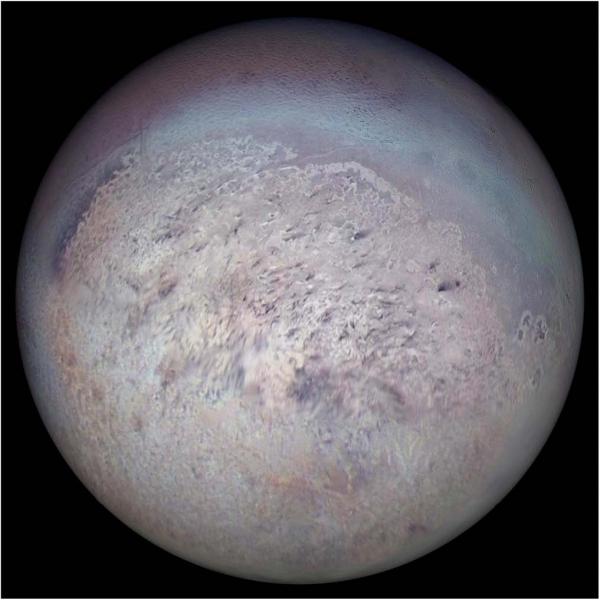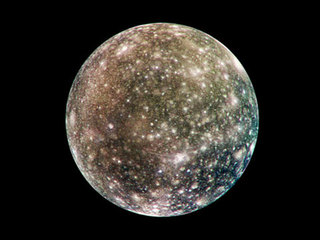*This post may contain affiliate links. This means we may make a commission if you purchase an item using one of our links*
The main differences between Callisto and Triton are that Callisto is bigger with a diameter of 4,280.6km whilst Triton’s diameter is 2,706km, Callisto is amongst the most cratered moons in the solar system, Triton orbit Neptune whilst Callisto orbits Jupiter and Triton orbits Neptune in a retrograde motion whilst Callisto’s orbital motion is counterclockwise like the other celestial objects in our solar system follow.
For a more detailed look at each of these celestial bodies along with their similarities and differences, continue reading as it will be discussed more thoroughly below.
What Is The Moon Triton?
Table of Contents

Triton is the largest moon of Neptune, whose most unusual feature is its retrograde orbit. Triton is the only major moon in our solar system which orbits in the opposite direction of its planet’s rotation.
First discovered on 10th October 1846 (just 17 days after the discovery of its planet, Neptune) by British astronomer William Lassell, “Triton” comes from a merman in Greek myth; a name which perhaps stems from the composition of this faraway moon.
The diameter of Triton is approximately 2,706km, making it a similar size to Earth’s moon. However, we know that its mass is far less than the first estimates suggested because data from Voyager showed that the surface is icy and highly reflective, a less dense composition than the dark surface of our moon.
This icy surface has resulted in ice based natural satellite displaying temperatures in the region of – 235 degrees Celsius.
This lower density stems predominantly from the water-ice interior encasing a denser rock core. Still, the mean density of 2.06 grams per cubic cm remains higher than that of any of Saturn’s or Uranus’ moons. In addition, Triton holds more than 99.5% of the mass of everything that orbits the planet Neptune and its total mass is greater than every smaller satellite in the solar system combined.
Scientists think that Triton may be an object from the Kuiper Belt that Neptune’s gravity captured millions of years ago. This is because it shares many similarities with the dwarf planet Pluto – the best-known world within the Kuiper Belt.
This frozen world is a land of geological oddities with craters and a collection of depressions and ridges known as cantaloupe terrain. The geysers found on this moon shoot plumes of nitrogen as high as 8km high, which creates a thin atmosphere of nitrogen.
In around 3.5 billion years, Triton’s orbit will travel too close to Neptune, and the planet’s gravitational pull will break the moon apart, creating a ring system.
What Is The Moon Callisto?

Callisto is one of the large moons orbiting Jupiter, the outermost of the Galilean moons, first discovered on 7th January 1610. The surface of this icy world is frozen, but scientists believe an underground ocean could reside beneath the ice.
Even if there’s water on Callisto, it won’t necessarily hold life because the surface is so old. Scientists will need to conduct more research into the moon before determining whether this is a likely possibility.
The ESA’s JUICE (Jupiter Icy Moon Explorer) mission is focused on the three ice moons of Jupiter. It is expected to arrive in 2030 and will focus on learning more about the environment of each, as well as their potential for hosting life.
Scientists estimate that Callisto is around 4.5 billion years old (the same age as Jupiter), and its average distance from the Sun is approximately 778 million km. It has a diameter of 4,820.6km, which makes it similar in size to the planet Mercury, and the average temperature is a frigid minus 139.2 degrees Celsius.
Callisto takes seven days to orbit its planet at an average distance of 1,880,000km, and it is tidally locked, meaning the same side of it always faces Jupiter. But this moon experiences less tidal influence than the other Galilean moons because it lies in the orbit of Jupiter’s primary radiation belt.
The name of this moon is derived from the stories of Greek myth. Callisto was the nymph who had an affair with Zeus, the King of the Gods. Upon hearing this news, Zeus’ wife Hera turned Callisto into a star and placed her in the Ursa Major constellation. Interestingly, every moon of Jupiter is named after a Greek figure who Zeus seduced.
Callisto may be the third biggest moon and similar in size to the planet Mercury, but it only has a mass of 107,593,737,963.819 billion kg. That may sound like a lot, but it’s only ⅓ the mass of the similarly sized Mercury.
You may wonder why scientists classify Callisto as a “moon” rather than a planet if it’s almost the same size as Mercury. The reason is simple; planets must orbit the sun, but Callisto orbits one of the planets.
The composition of this frigid world is around 60% rock and iron and 40% ice. The moon has roughly equal amounts of rock and ice, plus the potential for water below the surface. There are also traces of carbon dioxide, organic compounds, and silicates.
This moon is one of the oldest landscapes in the Milky way and the most heavily cratered body in our system. However, scientists believe this could now be a “dead” moon as there are no longer any signs of volcanism or plate tectonics on its surface.
How Are Triton And Callisto Similar?
As both are natural satellites, Triton and Callisto do share a few similarities, which include the following:
- Both have a hotter central core.
- Both have a rocky, terrestrial surface.
- Both are spherical in shape.
- Neither have rings surrounding them.
- Both are tidally locked to their planet.
- Both orbit their planet in an elliptical pattern.
- Neither have a magnetic field.
- Neither have tectonic plates.
- Both have an axial tilt that is practically 0.
Differences Between Triton And Callisto
In regards to the differences that the two have, they include the below:
- Callisto is the bigger of the two with a diameter of 4,820.6km whilst Triton has a diameter of 2,706km.
- Triton orbits Neptune whilst Callisto orbits Jupiter.
- Triton has a very thin exosphere composed mostly of nitrogen with small amounts of methane whilst Callisto’s atmosphere is thin composed of hydrogen and oxygen.
- A day on Triton takes 5.877 days whilst a Callisto day is 17 days.
- It takes Triton 5.877 days to orbit Neptune whilst Callisto orbits Jupiter in 17 days.
- Callisto orbits Jupiter at an average distance of 1.88 million km whilst Triton is 354,800 km away from Neptune.
- Triton’s average temperature is around -235 degrees Celsius whilst Callisto’s average temperature is -139.2 degrees Celsius.
- Callisto’s density is 1.83 g/cm³ whilst Triton’s density is 2.06 g/cm³.
- Callisto is amongst the most cratered entities in our solar system.
- Callisto’s mass is 1.07 x 10^23 kg whereasTriton’s mass is 2.14 × 10^22 kg.
- Triton’s gravitational strength is 0.779 m/s² whilst Callisto’s is 1.236 m/s².
- Triton is the only moon in our solar system that orbits its planet in a retrograde orbit.
Summary
Even though Callisto and Triton are both natural staellites and have their fair share of common features, they do still have some very defining attributes that really differentiate the two.
Like for example Triton’s retrograde orbit and Callisto’s heavily cratered surface that makes both moons very disticnt when observed side by side.

